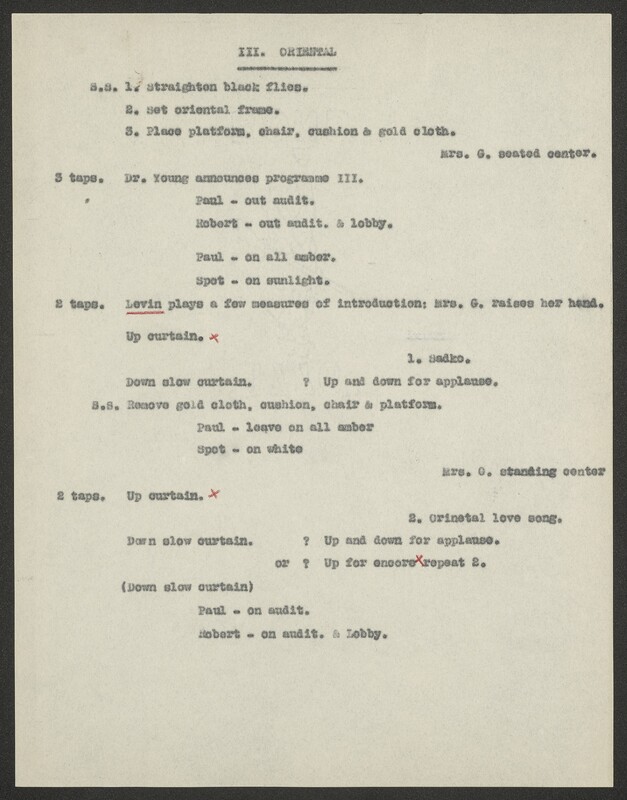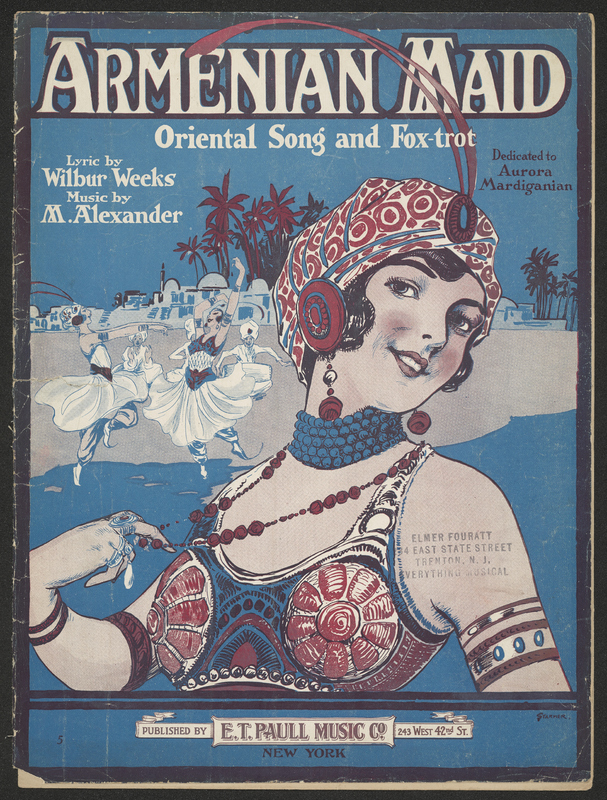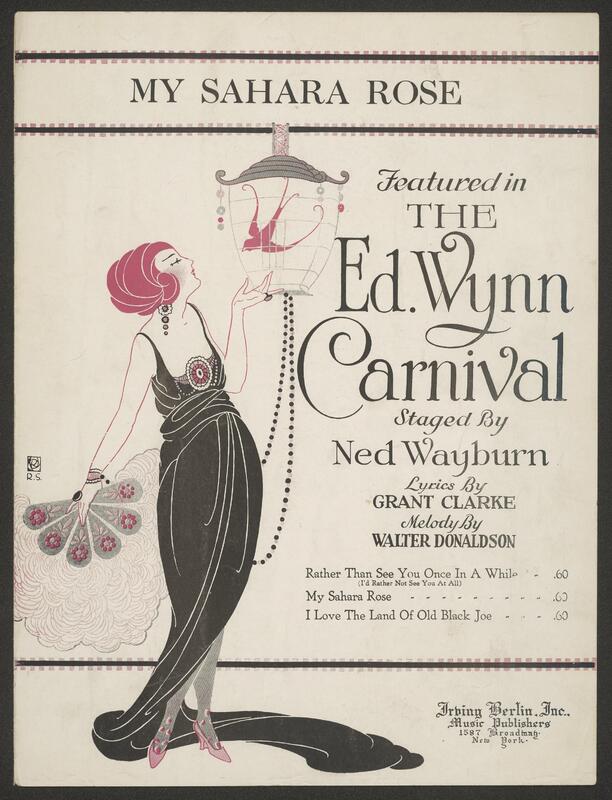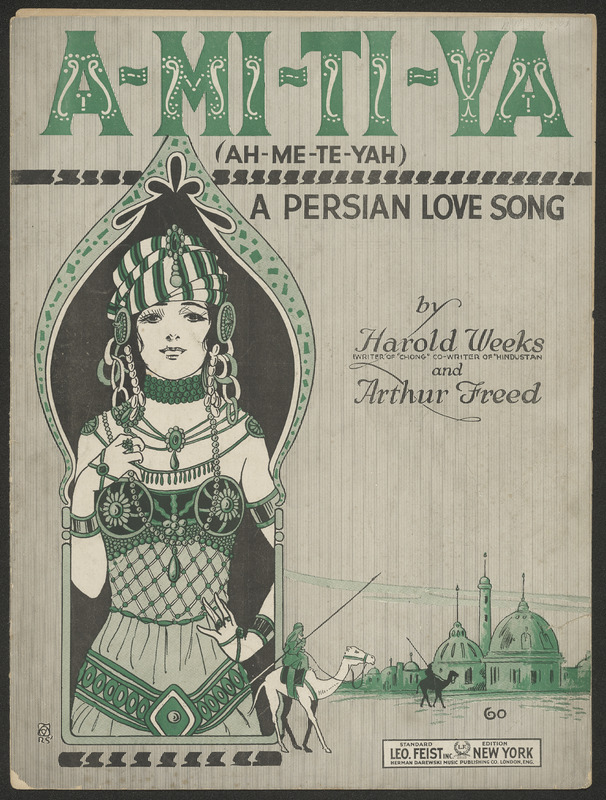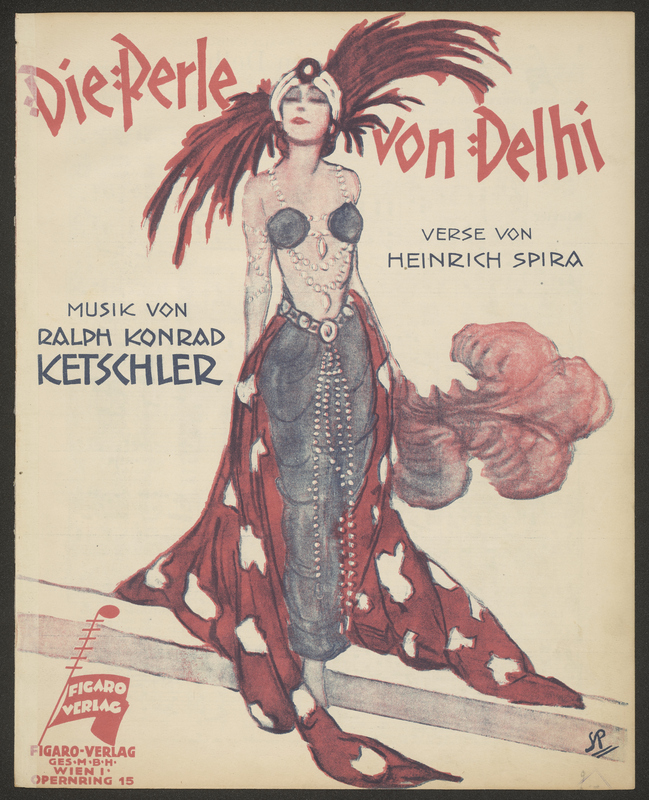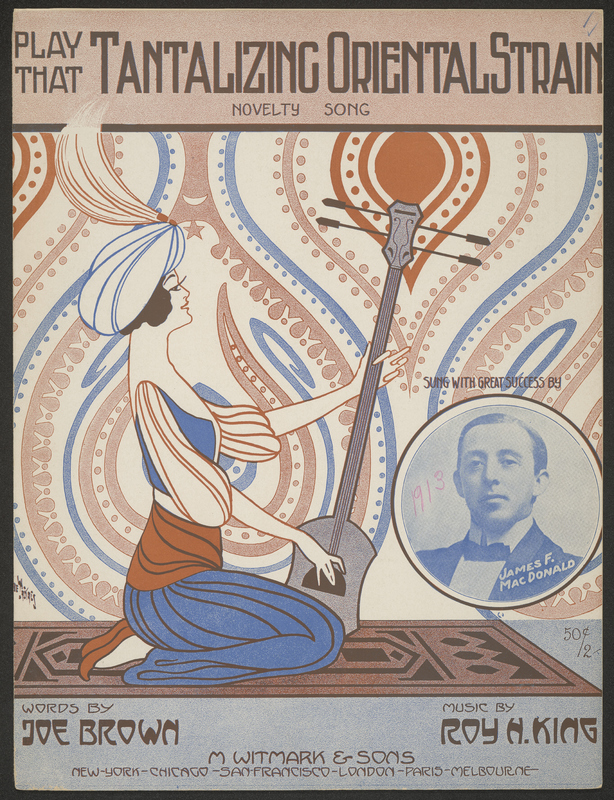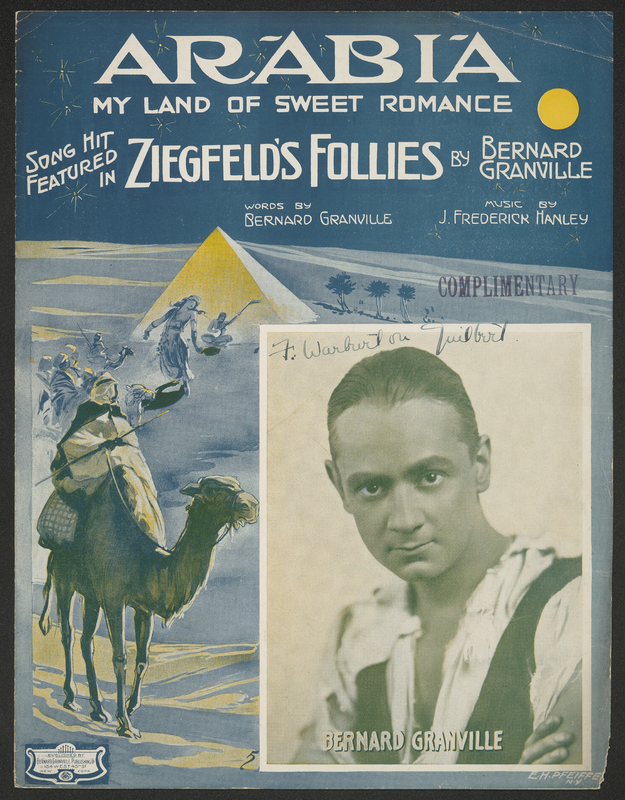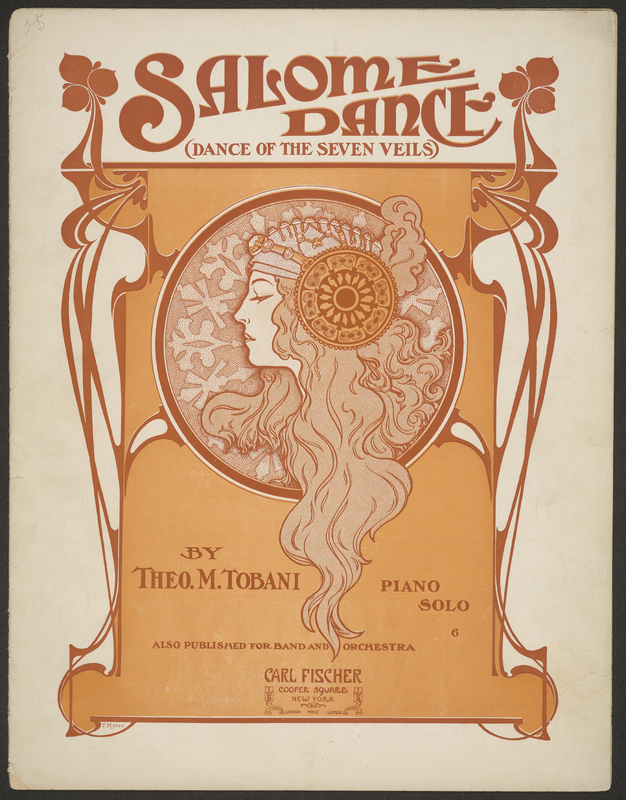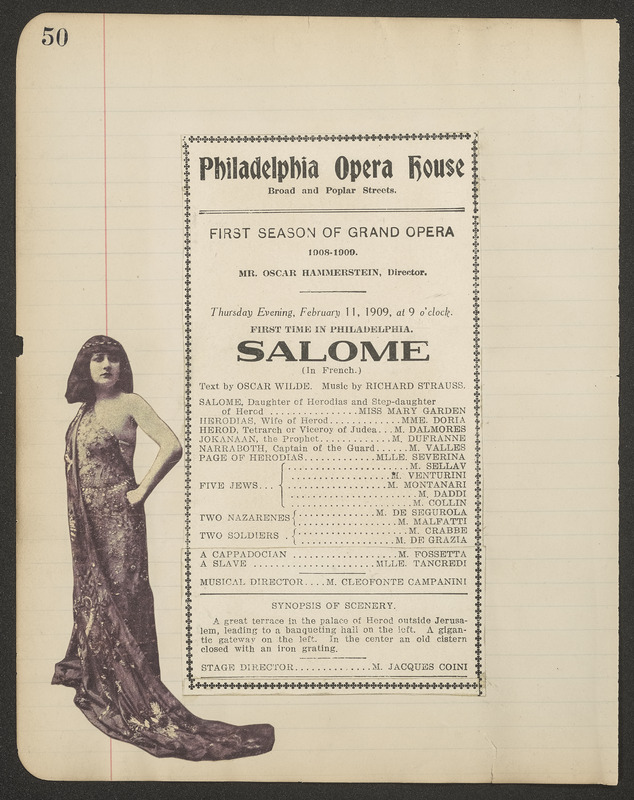Orientalism in Popular Culture
The 20th century saw a surge of Western interest in the Middle East and Asia, fueled in part by increased tourism and new discoveries such Tutankhamun’s tomb in 1922. Images of the East flooded popular culture, creating a romanticized and stereotyped mirage of Middle Eastern and Asian cultures. These Orientalist depictions often overlapped with racist and sexist stereotypes.
These popular songs from the Johns Hopkins Collection of Middle East-inspired Sheet Music were amassed to explore Orientalism through sheet music. On the covers, you’ll find hazy pyramids, camel caravans, elaborately costumed people, and ornate architecture.
The surge in Orientalist media that produced these songs also inspired artists like Léon Bakst and theatre enthusiasts like Alice Warder Garrett.
Bakst frequently invoked Asian-inspired motifs in his work. His set and costumes for the ballet Scheherezade “prompted critics to use words like ‘sensual,’ ‘erotic,’ and ‘sumptuous’ and to describe Bakst’s designs as a revelation, full of dazzling greens, blues, reds, oranges and yellows underlining the violence and eroticism of the music, choreography and dancing.” [Susanne Marten-Finnis (2013) The Return of Leon Bakst: Slave Magic or Oriental Other?, Journal of Modern Jewish Studies, 12:2, 276-296 ]
View the collection of Middle East-inspired Sheet Music on JSTOR.
Alice kept several scrapbooks to memorialize performances she attended throughout the United States and Europe. This performance program for Salome is accompanied by a cut-out of the performer in costume.
View a student-curated online exhibit on the Collection of Middle East-inspired Sheet Music
